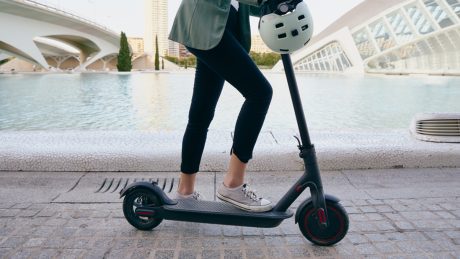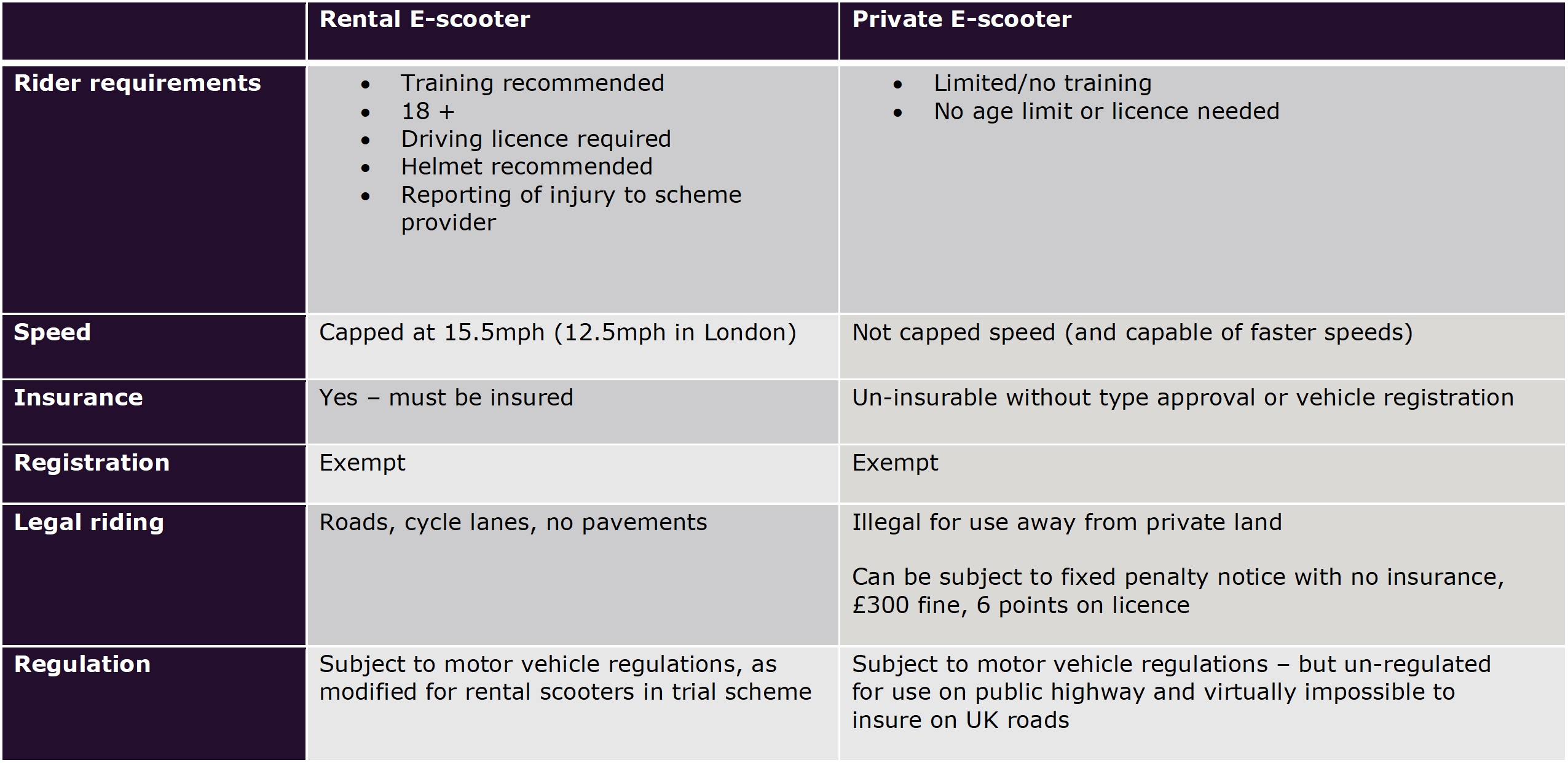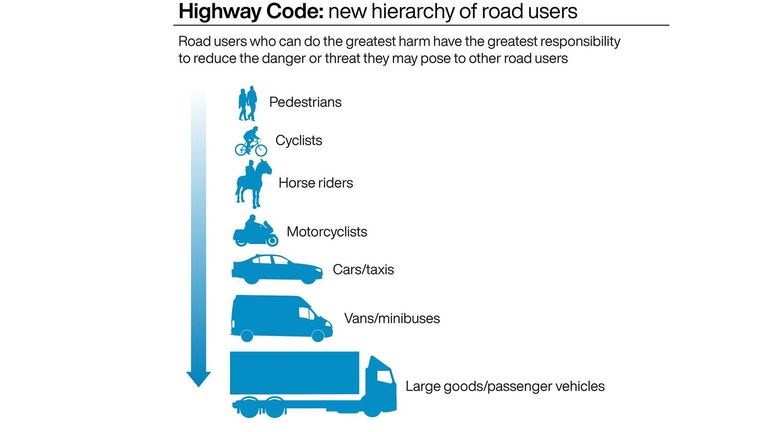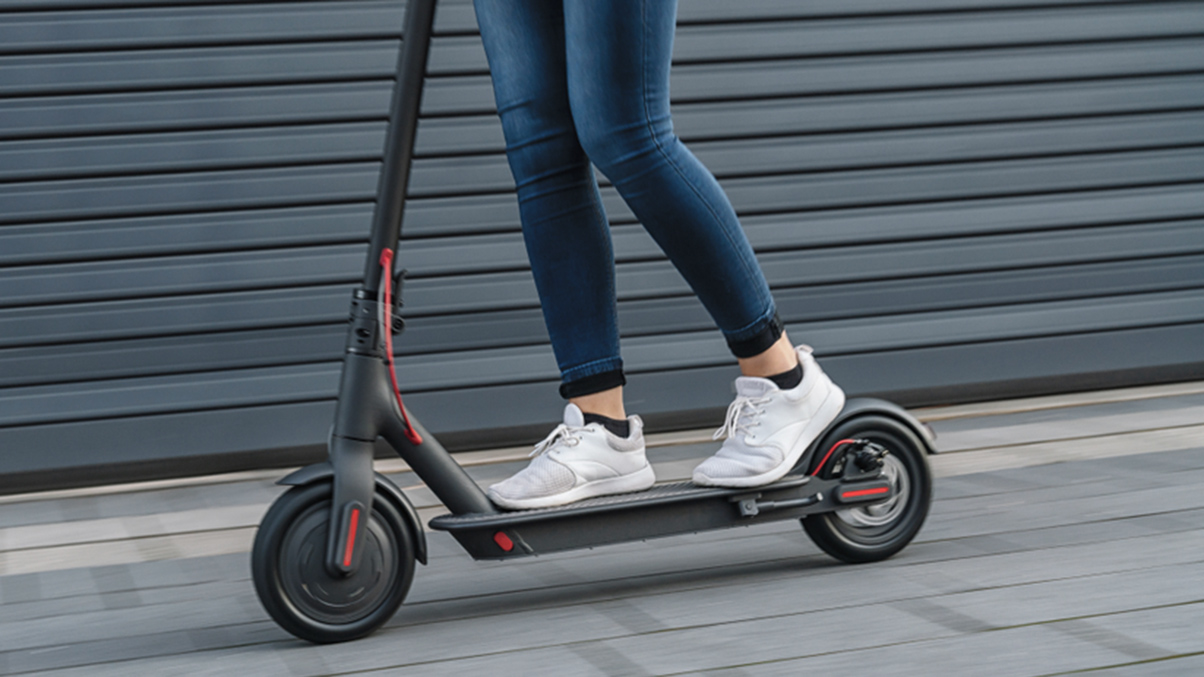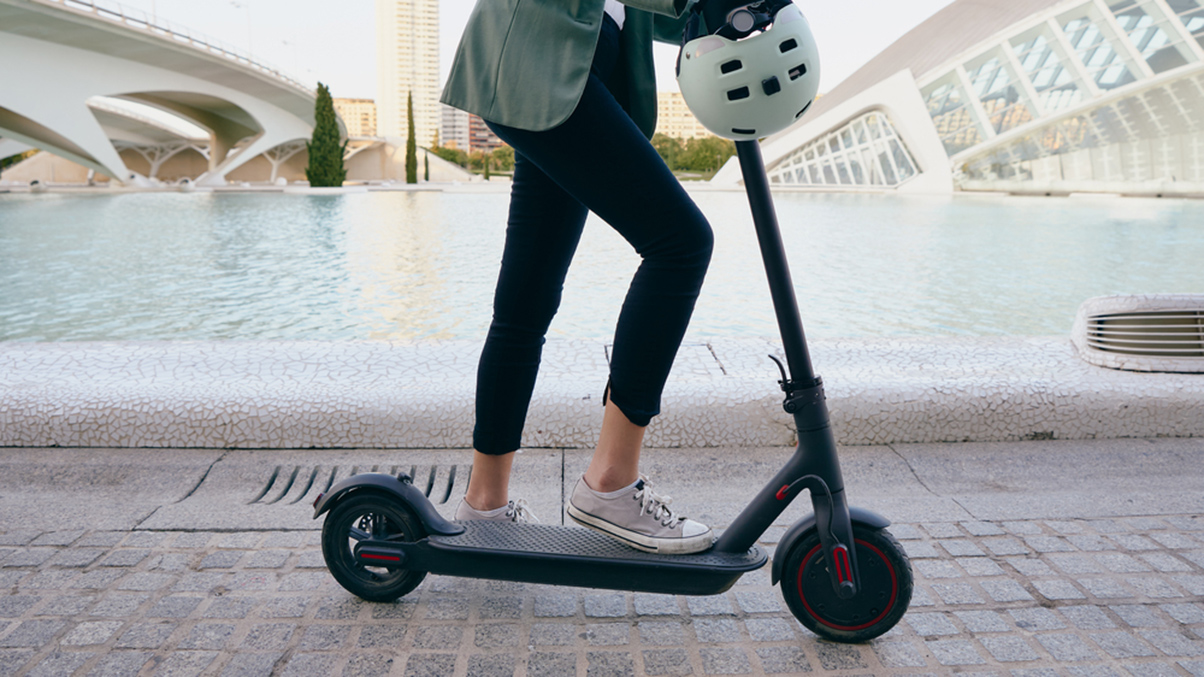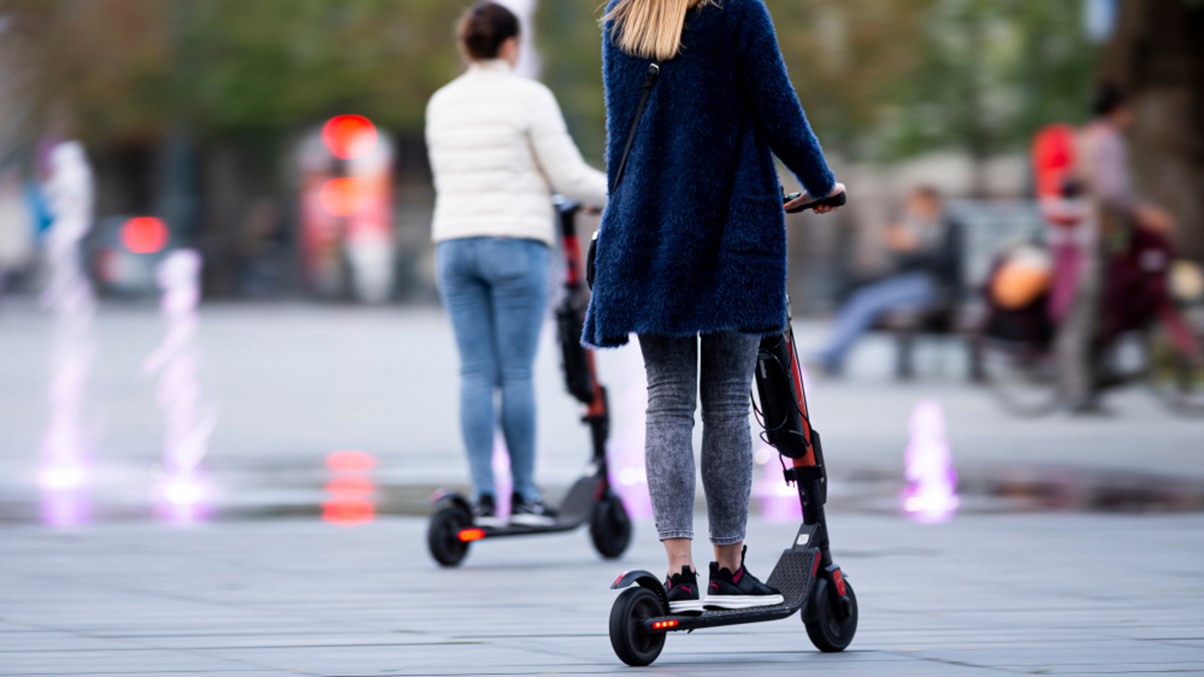E-scooters are now a common sight on the roads in England, with e-scooter trials responsible for 23,000 e-scooters in 31 approved areas. The recent extension of the rental schemes to November 2022 to gather further data is a concern. Accidents, injuries and fatalities are becoming more common as demand outstrips regulation. Proper regulation and legislation for private e-scooters should move up the government’s transport agenda.
Lucie Clinch evaluated the recent parliamentary report on e-scooter safety for the May 2022 edition of PI Focus (original version available only to APIL members).
The government rolled out e-scooter trials a year ahead of schedule following the Covid-19 pandemic. Separate from the trials, consumers can buy e-scooters in high street shops. Despite this, it is almost impossible to use them legally on the roads or in other public places as they are only permitted on private land. Insurance on e-scooters only extends to those ridden under a rental scheme. The main areas requiring clarity are private use and ownership of e-scooters as sales continue to boom.
E-scooters within a trial scheme are insured as motor vehicles, and accident and journey data will generally be provided to the relevant scooter trial provider/company. In contrast, it is difficult to gather data on private e-scooter journeys and accidents.
The Parliamentary Advisory Committee on Transport Safety (PACTS) released its final report on the safety of private e-scooters in the UK in March, detailing its review of casualty information in 2021. In light of this report, I consider where the future of e-scooter regulation and safety might be heading.
PACTS recommendations
In its report, PACTS recommends that the Department for Transport urgently addresses illegal private e-scooter use. It calls for the government to undertake a public consultation on legalisation and commission further research into e-scooter safety. PACTS also recommends regulations are imposed on the construction and use of e-scooters and calls for mandatory use of helmets, warning sound devices and lighting.
Private and rental scooters
Rental e-scooters within approved trials have strict construction requirements that private owned ‘off the shelf’ e-scooters do not. It is possible to toggle speeds on a private e-scooter, and they are capable of much faster speeds than the usual 15.5mph limit. Rental e-scooters carry technology to limit speeds in busier areas. E-scooters in a scheme fall within a maintenance and repair regime that a private owner would not necessarily have. Unlike motor vehicles that require tax, MOT and servicing, there is no such regime for private e-scooters.
E-scooter casualties
While the public may view e-scooters as akin to bicycles, a study commissioned by Transport for London (TfL) in 2021 suggested that riding an e-scooter could be 100 times more dangerous than riding a bicycle. Plus, e-scooter riders sustain injuries requiring medical treatment on average every 3.1 years. When it released its own data in 2021, TfL acknowledged the difficulties in gathering e-scooter accident data.
There is an ongoing issue with the database, STATS19, which collects all road traffic collisions resulting in a personal injury where the accident is reported to the police. The difficulty is that STATS19 does not have a category covering e-scooters, so any database search relies on supplementary text confirming an e-scooter’s involvement. The figures do not distinguish between private and rental scooters. As the PACTS report confirms, it is difficult to trace casualties involving private e-scooters in the UK using this data alone as these accidents are largely underreported. Changes are proposed to enable the reporting system to include “powered personal transporter device” as a type of vehicle, but those changes will take time to implement.
Among data gathered independently by PACTS, two insurance firms provided claims data with some information on the types of injury suffered. As of February 2022, the Motor Insurers’ Bureau (MIB) confirmed 64 claims with the potential cost of £1,684,820 and one serious injury case for £628,000. The MIB will still be required to deal with e-scooter injury claims because private e-scooters are currently virtually uninsurable for use on UK roads.
E-scooters and injury
PACTS data confirms that e-scooter riders appear to be the most prevalent among casualty data (75.9%), followed by pedestrians (14.6%). It is not clear how many of those injured while riding were aware they were riding illegally. Many accidents involving e-scooters are likely to cause life-changing injuries or death. As use increases, injuries will also rise, including traumatic head injuries and fractures to the jaw, wrists and ankles. There have already been rider and pedestrian fatalities resulting from e-scooter use, including the death of a 14-year-old rider in London in March.
It remains surprising that wearing a helmet is not compulsory for e-scooter riders. Helmets are mandatory in several European countries, including Finland, Greece and Denmark. Spain will make helmets mandatory from March 2022, and France is discussing taking this step.
Small children are especially vulnerable to injury as passers-by, particularly if an e-scooter is used in a public space. Young and teen riders may have little knowledge of the road and are not required to provide a provisional licence or prove their age when buying an e-scooter for private use. Retailers must inform customers that the use of e-scooters is restricted, but it is not known how clearly this information is given. My review showed the information on legal use buried deep within pages of e-scooter models, specifications and prices for buyers to compare.
PACTS data from NHS hospitals
PACTS gathered data from various NHS hospitals of admissions from e-scooter incidents. At Alder Hey Children’s Hospital in Liverpool, an audit confirmed 30 e-scooter causalities since January 2020, including seven suffering major trauma. More than half were estimated to have been travelling over 15mph at the time of the collision.
The Major Trauma Centre at the Royal London Hospital confirmed that within eight months in 2021, they saw more than 70 road traffic casualties, of which eight were e-scooter riders, each brought in by ambulance. Of the eight, two stayed in intensive care for more than a week following urgent neurosurgery. It is clear from the various data sets that the use of a helmet for e-scooter riding is limited.
The Highways Code and vulnerability
TfL acknowledges that e-scooter riders are one of the vulnerable user groups.
When the Highways Code was updated in early 2022 with a new hierarchy of road users, pedestrians were at the top as the most vulnerable and least dangerous, with HGVs at the bottom (least vulnerable and most dangerous). It is unclear where e-scooters will sit in any new hierarchy. They would likely have to sit towards the top of the hierarchy, given the vulnerability of e-scooter riders.
In Germany, data shows that in a collision between an e-scooter and a pedestrian, the pedestrian is three times more likely to be injured than the e-scooter rider (PACTS report page 52). Pedestrians, particularly the elderly, the young, and the visually impaired, are at risk of illegal road and/or pavement e-scooter riding. It remains unclear whether e-scooter manufacturers or trial scheme providers are any closer to installing audible warnings onto e-scooters to warn of an e-scooter approach.
E-scooter claims and access to compensation
Unsurprising, the rider is also at risk of injury. There are no training, testing or licensing requirements for someone buying an e-scooter from their local shop. In contrast, a rental e-scooter rider requires a provisional driving licence and must answer some questions before hiring.
A private e-scooter rider is less likely to wear a helmet or protective clothing and is particularly vulnerable in collision with a motor vehicle. If another potentially negligent vehicle driver is involved in an accident, it is important e-scooter riders continue to have access to compensation, albeit they may have been riding illegally on a public road at the time of a collision. Currently, the MIB is dealing with these claims.
Evidence will be crucial in any liability dispute. There is no requirement to report e-scooter accidents to the police, although it is likely that a serious incident involving a motor vehicle would be reported. CCTV evidence may prove instrumental in any liability discussions. Still, it remains to be seen whether the standard of a ‘reasonable driver’ will also be applied to e-scooter ‘riders’ and what that standard might be.
Potential defences
The defence of ex turpi causa, or ‘illegality’ to prevent a legal action founded on an illegal act, is likely to be used where an e-scooter is illegally ridden. However, each case will turn on its facts. More important will be the circumstances of the accident, such as the positioning of the respective vehicles on the road. The journey and speed data will likely be recoverable if the e-scooter is ridden within a rental scheme. On private e-scooters, there may be more reliance on the rider’s GPS tracking via iPhones or other methods to investigate speed and positioning before an accident.
Some private e-scooters are capable of much faster speeds than the recommended limit, and it will be important to assess relative speed as early as possible. There are currently no e-scooter judgments on which to base the legal principles, so we will continue to consider road traffic law in the usual way when considering the potential impact of the ex turpi causa defence on any road accident claim.
There will be plenty of arguments on contributory negligence of a rider, and it will be interesting to see how the courts apply such principles against an unregulated mode of transport. Would they consider an e-scooter rider akin to a cyclist, for example? Considerations may include whether the rider was wearing a helmet, what was their visibility like, whether there were lights on the front/rear of the scooter and were any risky manoeuvres being carried out.
Expert evidence is likely to play an important role in addressing the circumstances of an accident.
Insurance
The issue of insurance is also key in any e-scooter claim: if an e-scooter user collides with a pedestrian and causes them serious injury, that injured party should be afforded access to compensation through an insurance regime. Stewarts has previously argued that justice would be more easily served if e-scooters were treated the same as cars, with compulsory insurance underwritten by the MIB and funded by taxation of the vehicles. As e-scooter use increases, it may not be viable for the MIB to continue to fund claims, and it has also expressed support for e-scooters being within an insurance regime.
The benefits of e-scooter use
New forms of transport come with both benefits and challenges for society. A benefit of e-scooters is their emission-free environmentally-friendly credentials, though some questioned the sustainability of manufacturing and the likely lifetime of e-scooters. Supporters of e-scooters also argue they can take pressure off the busy road network and, in the post-pandemic world, offer a form of solo travel for people seeking to avoid public transport.
How can we make e-scooter use safer?
Given the number of privately owned, legally purchased vehicles in circulation in the UK and internationally, an outright ban is unrealistic.
Steps to make e-scooter use safer for both riders and pedestrians could include:
- provision for riders to use cycle lanes, where available (though experienced cyclists may object to this)
- only riders with a full driving licence, aged over 17, should be able to use e-scooters on public roads
- compulsory electronic registration of e-scooters used publicly, similar to registering a motor vehicle and owner upon purchase
- compulsory insurance for private e-scooters to provide injured parties with a standard route to redress following an accident.
The Road Traffic Act 1998 cannot address all issues faced by British road users in 2022. Instead of updates to out-of-date legislation, it is crucial proper insurance regimes are put in place and the MIB continues to cover claims where uninsured or untraced e-scooter riders cause public injury or damage.
As e-scooter use rises and more riders use them as an alternative to traditional vehicles, treating them similarly from an injury and insurance law perspective is sensible. It is time for legalisation and regulations to be reviewed and improved urgently.
You can find further information regarding our expertise, experience and team on our Personal Injury pages.
If you require assistance from our team, please contact us.
Subscribe – In order to receive our news straight to your inbox, subscribe here. Our newsletters are sent no more than once a month.

